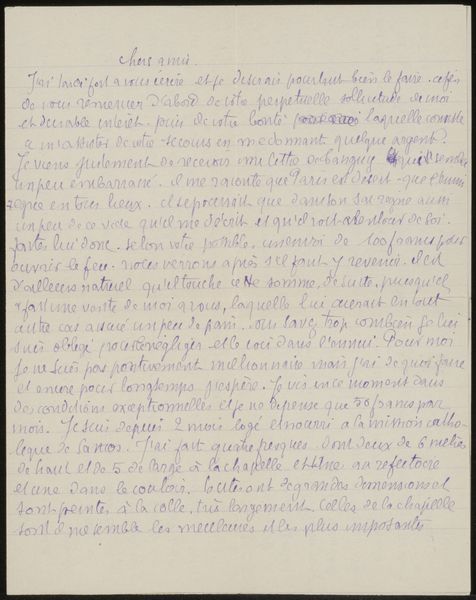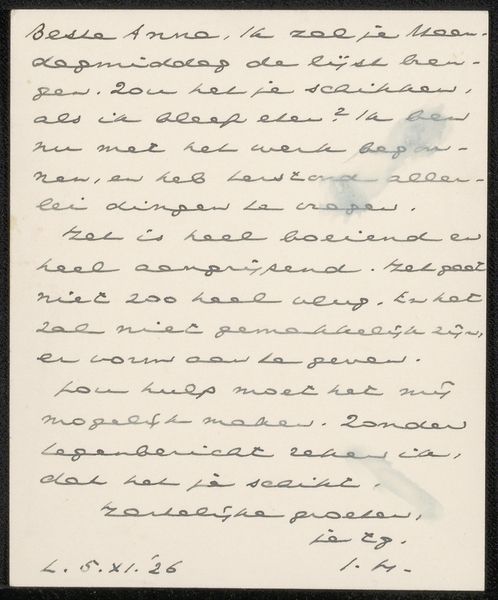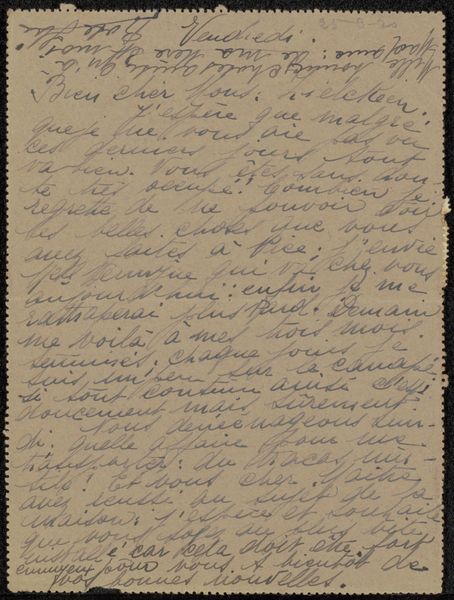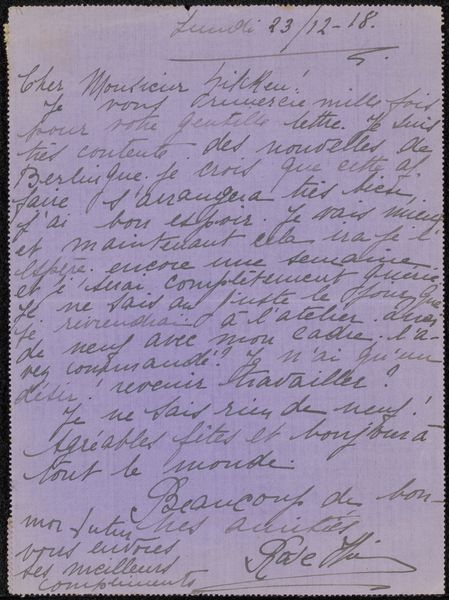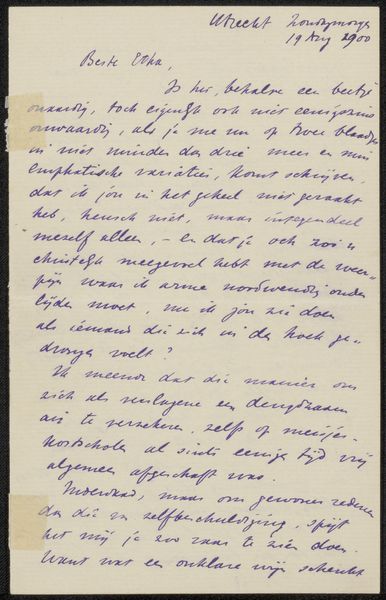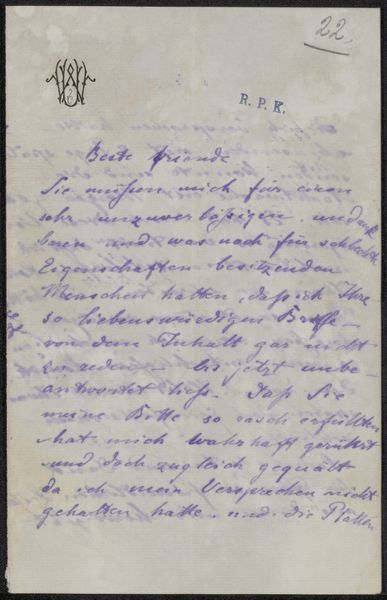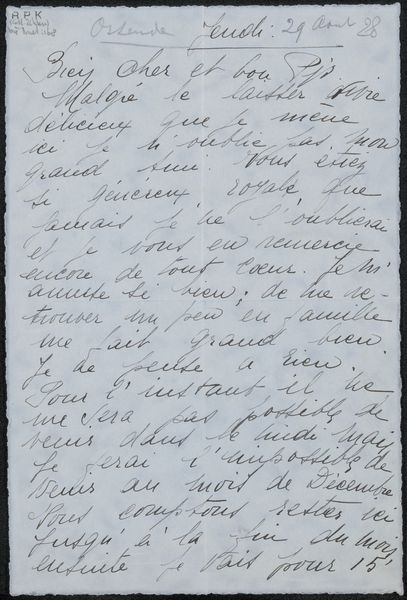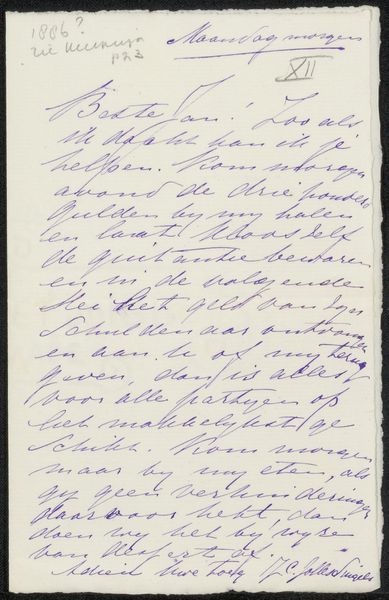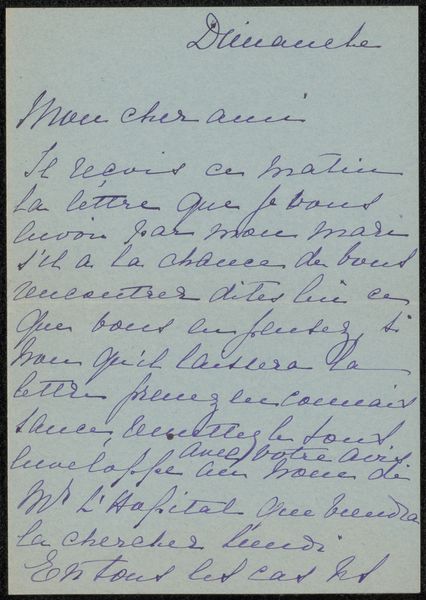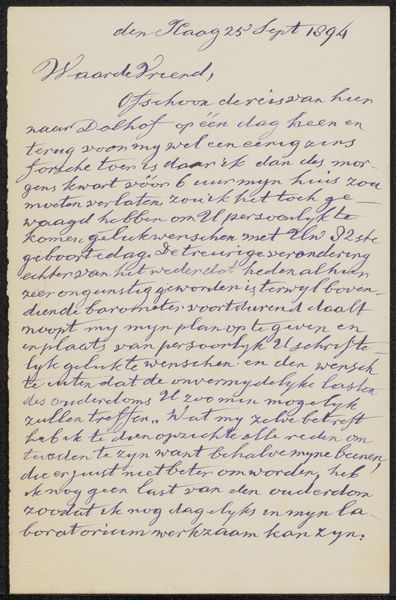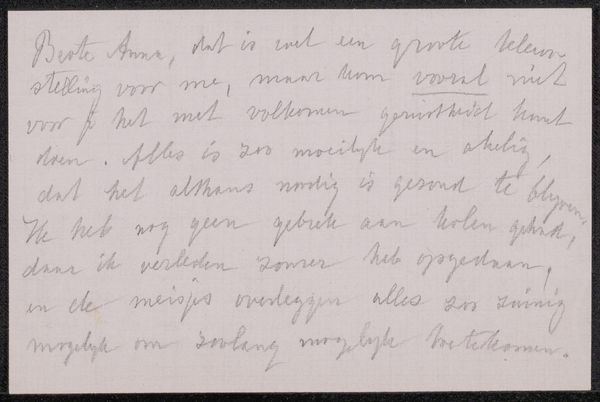
drawing, paper, ink, pen
#
drawing
#
hand-lettering
#
hand drawn type
#
hand lettering
#
paper
#
personal sketchbook
#
ink
#
sketchwork
#
hand-drawn typeface
#
hand drawn
#
pen work
#
sketchbook drawing
#
pen
#
sketchbook art
Copyright: Rijks Museum: Open Domain
Editor: This drawing, believed to be from 1919, is titled "Brief aan Philip Zilcken" and is attributed to T. Himelschein. It appears to be a handwritten letter using ink on paper. The neat cursive gives the letter a formal air, yet seeing it rendered as a drawing feels surprisingly intimate. What strikes you most about this piece? Curator: Ah, yes, a letter— a window into another's world! What I see is the tension between the mundane and the deeply personal. It's a sketch, a draft even, of fleeting thoughts immortalized. Consider the cultural context. 1919… a world just emerging from the ashes of the Great War. Every act of communication held greater weight, wouldn’t you think? To hold this letter, imagined straight from the hand of Himelschein is incredibly compelling. Tell me, doesn't it strike you as quite touching, in its simple vulnerability? Editor: I suppose it does, now that you mention it! Seeing the letter presented as art makes me think about the value we assign to different kinds of writing. We value published texts so much more than the private writings that probably reflect lived experience more honestly. Curator: Precisely! We are peeking behind the curtain. We value finished objects more, not the sketch work which reveals how things truly evolve. It makes me think: what mundane, quickly jotted note might reveal secrets about our lives to those a century from now? What will *they* find compelling in our "trash"? Editor: That’s fascinating to consider. I’ll never look at a handwritten note the same way again. Curator: Indeed, every mark contains a universe.
Comments
No comments
Be the first to comment and join the conversation on the ultimate creative platform.
